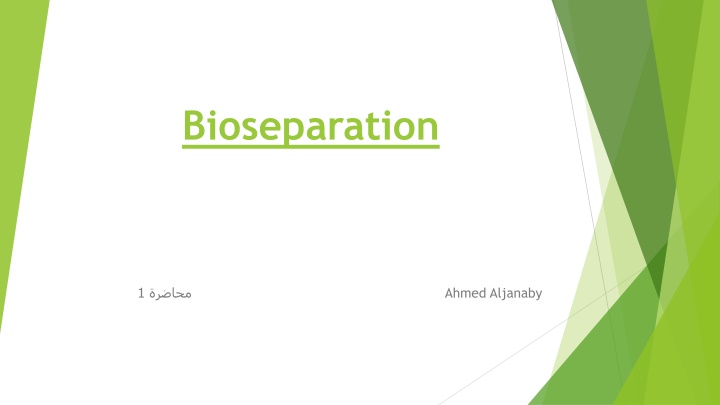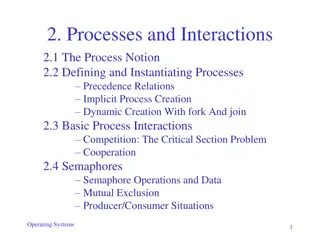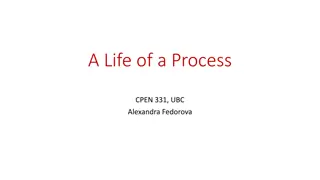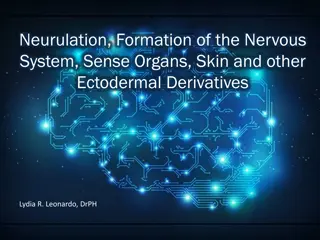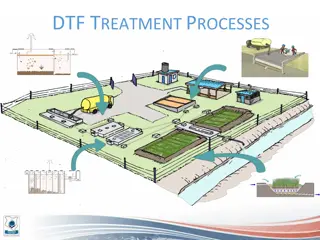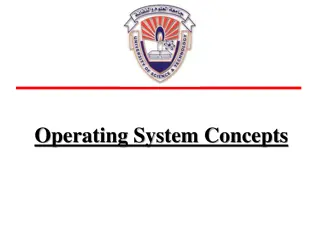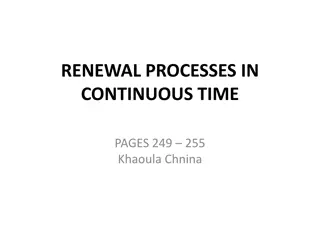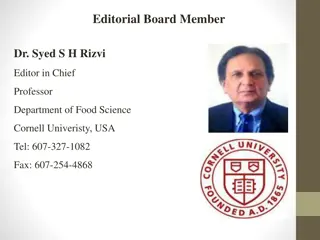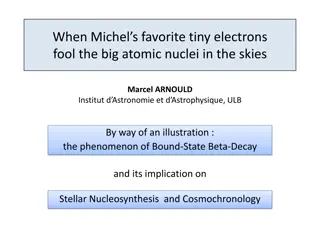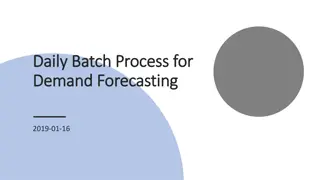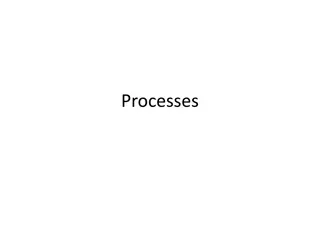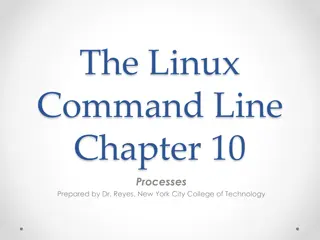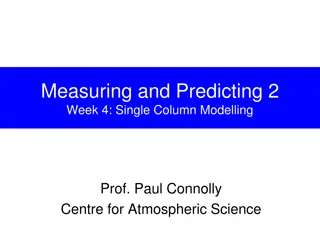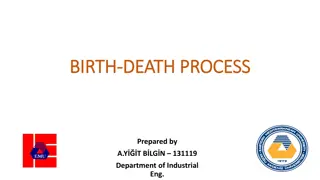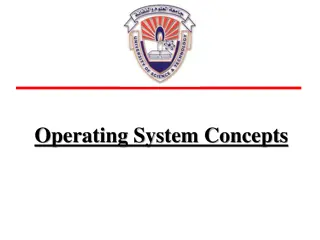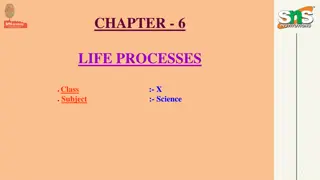Insights into Bioseparation Processes
Bioseparation involves the purification of biologically derived products such as antibodies, cytokines, and gene therapy vectors. It encompasses reactive and extractive bioprocessing, utilizing various factors for separation like size, density, polarity, and shape.
Download Presentation

Please find below an Image/Link to download the presentation.
The content on the website is provided AS IS for your information and personal use only. It may not be sold, licensed, or shared on other websites without obtaining consent from the author.If you encounter any issues during the download, it is possible that the publisher has removed the file from their server.
You are allowed to download the files provided on this website for personal or commercial use, subject to the condition that they are used lawfully. All files are the property of their respective owners.
The content on the website is provided AS IS for your information and personal use only. It may not be sold, licensed, or shared on other websites without obtaining consent from the author.
E N D
Presentation Transcript
Bioseparation 1 Ahmed Aljanaby
Bioseparation New biologically derived products have been developed, approved and licensed in the last decade. This includes monoclonal antibodies used for the treatment of cancer and multiple sclerosis, plasmids for gene therapy, cytokines and interleukins. Many of these products need to be extensively purified before they can be used for their respective applications. approved and licensed in the last decade. Bioseparations efers to the systematic study of the scientific principles utilized for the purification of biological products. It is specifically referred to the separation and purification segment of a bioprocess which followed some form of biological reaction e.g. purification of an antibiotic following microbial fermentation.
Bioseparation Bioprocessing can be classified into two categories: 1.Reactive bioprocessing 2. Extractive bioprocessing In reactive bioprocessing, the bioseparation process follows some form of biological reaction Extractive bioprocessing almost completely involves bioseparation.
Bioseparation Examples of reactive biosepartio include, but are not limited to: biofuel recovery from fermentation broth. primary recovery of proteins from cell cultures. two aqueous phase extraction and micellar systems for selective partitioning of proteins. reversible chemical complexation for the recovery of complex organics. Examples of extractive biosep(ethanol production, acetone/butanol production, etc
Basis of separation in bioseparation processes Biological products are separated based on one or more of the following factors: 1. Size: e.g. filtration, membrane separation, centrifugation 2. Density: e.g. centrifugation, sedimentation, floatation 3. Diffusivity: e.g. membrane separation 4. Shape: e.g. centrifugation, filtration, sedimentation 5. Polarity: e.g. extraction, chromatography, adsorption 6. Solubility: e.g. extraction, precipitation, crystallization 7. Electrostatic charge: e.g. adsorption, membrane separation, electrophoresis 8. Volatility: e.g. distillation, membrane distillation, pervaporation
Physical forms separated in bioseparation 1- Particle-liquid separation The separation of cells from cell culture medium, the separation of blood cells from plasma, and the removal of bacteria and viruses from protein solutions. Particle-liquid separation can be achieved by forcing the suspension through a porous medium which retains the particles while allowing the liquid to go through. 2- Particle-particle separation in liquid medium The fractionation of sub-cellular organelle, the separation of plasmid DNA from chromosomal DNA, and the separation of mature cells from young cells. This type of separation can be achieved by zonal centrifugation which involves the introduction of the mixture at a location within a liquid medium which is then subjected to an artificially induced gravitational field.
Physical forms separated in bioseparation 3-Particle-solute separation in liquid medium The separation of dissolved antibiotics from cells and cell debris present in fermentation broth. The methods used for particle-solute separation are fundamentally similar to those used for solid-liquid separation on account of the fact that the solute remains dissolved in the liquid medium. 4-Solute-solvent separation The purpose of this being either the total or partial removal of a solvent from a solute product (e.g. protein concentration enrichment), OR The removal of dissolved impurities from a liquid product, OR The replacement of a solvent from a solution by another (i.e. solvent exchange). A range of options are available for solute-solvent separation the easiest of these being evaporation and distillation.
Physical forms separated in bioseparation These techniques involve the application of heat and cannot therefore be used for separation of biological materials which tend to be thermolabile. Membranes which can retain dissolved material while allowing solvents through are widely used for this type of separation: a reverse osmosis membrane will retain small molecules and ions, a nanofiltration membrane will retain larger molecules such as vitamins, hormones and antibiotics, while an ultrafiltration membrane will retain macromolecules such as proteins and nucleic acids. Another way of removing a solvent from a solute is by reversibly binding the solute on to a solid surface, this being referred to as adsorption. Once solute binding has taken place, this separation is transformed to a particle-liquid separation, i.e. the solvent is separated from the solid-bound solute. The bound solute is subsequently recovered from the solid material, this being referred to as desorption.
Physical forms separated in bioseparation 5- Solute-solute separation in liquid medium The most challenging form of separation. An example of this is the separation of serum albumin from other serum proteins. Solute-solute separation can be achieved by selective adsorption, i.e. by selectively and reversibly binding the target solute on to a solid material. Solute-solute separation can also be carried out by liquid-liquid extraction, i.e. by contacting the solution with an immiscible liquid in which the target solute has high solubility. Nanofiltration, ultrafiltration and dialysis membranes can be used for such separations. An indirect way of carrying out solute-solute separation is by precipitation, which involves the selective precipitation of the target solute.
Physical forms separated in bioseparation 6- Liquid-liquid separation Liquid-liquid separation is required in the manufacture of solvents such as acetone and ethanol which typically have to be separated from an aqueous medium. If the solvent is immiscible with water, phase separation followed by decantation may be sufficient. However, if the solvent is miscible with water (as in the case of ethanol), other separation methods have to be utilized. With temperature stable and volatile solvents such as ethanol, distillation has been traditionally used. However with the advent of membrane technology, separation processes such as membrane distillation and pervaporation have come into widespread use. Typically, the upstream side of the membrane is at ambient pressure and the downstream side is under vacuum to allow the evaporation of the selective component after infiltration through the membrane
Bioseparation techniques As previously mentioned, a bioseparation process must combine high selectivity (or resolution) with high throughput (or productivity). Hence bioseparation processes tend to be based on multiple techniques arranged such that both high-resolution and high- throughput can be obtained in an overall sense.
Physical forms separated in bioseparation While developing a bioseparation process the following should be taken into consideration: 1. The nature of starting material: e.g. a cell suspension, a crude protein solution 2. The initial location of the target product: e.g. intracellular, extracellular, embedded in solid material such as inclusion bodies 3. The volume or flow-rate of the starting material 4. The relative abundance of the product in the starting material, i.e. its concentration relative to impurities 5. The susceptibility to degradation e.g. its pH stability, sensitivity to high shear rates or exposure to organic solvents 6. The desired physical form of the final product, e.g. lyophilized powder, sterile solution, suspension 7. The quality requirements, e.g. percentage purity, absence of endotoxins or aggregates 8. Process costing and economics
A RIPP (Recovery, Isolation, Purification and Polishing) A RIPP (Recovery, Isolation, Purification and Polishing) scheme is commonly used in bioseparation. This strategy involves use of low resolution techniques (e.g. precipitation, filtration, centrifugation, and crystallization) first for recovery and isolation followed by high resolution techniques (e.g. affinity separations, chromatography, purification and polishing. and electrophoresis) for The high-throughput, low-resolution techniques are first used to significantly reduce the volume and overall concentration of the material being processed. The partially purified products are then further processed by high- resolution low-throughput techniques to obtain pure and polished finished products.
A RIPP (Recovery, Isolation, Purification and Polishing) Example of bioseparation A scheme for the bioseparation of reagent grade monoclonal antibody from cell culture supernatant is shown in Fig. Murine or mouse monoclonal antibodies are produced by culturing hybridoma cells in different types of bioreactors. In recent years it has been possible to synthesize humanized and chimaric monoclonal antibodies by culturing recombinant Chinese Hamster Ovarian (CHO) cells.
In the bioseparation scheme shown in Fig., the key purification step involves affinity chromatography. Prior to affinity chromatography the cell culture supernatant needs to be cleaned up by membrane filtration or centrifugation so that cells, cell debris and other particulate matter do not clog-up the affinity column. The nearly purified monoclonal antibody obtained by affinity chromatography is further purified by ion-exchange chromatography and polished by gel-filtration to obtain greater than 98% pure product in the solution form. The main disadvantages of using the RIPP scheme are: 1. High capital cost 2. High operations cost 3. Lower recovery of product
